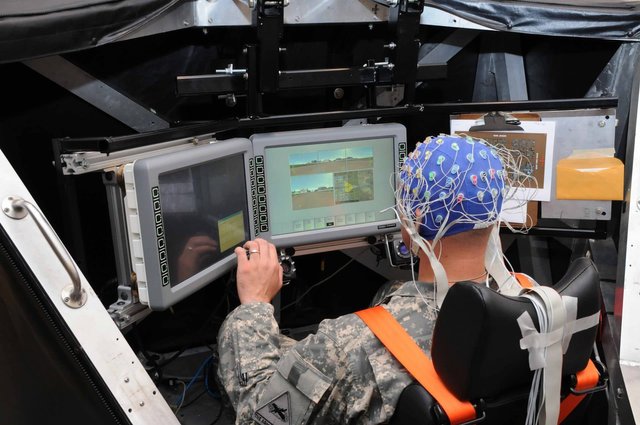Technology has been improving and there have been improvement on humans and how we live with everything around us. In this post, I will be looking at a technology that will cause a change in our future and that technology is Darpa’s Next Generation, Non-Surgical, Neurotechnology (N3) project. For this post, I will be using N3 project to represent the Next Generation, Non-Surgical, Neurotechnology project. From the Name, it should be self-explanatory but for more clarity, the programs has the aim to develop high performance through the brain so as to create reliable nueral interfaces without surgical or implanted electrode. This is part of the brain-machine interfaces (BMIs).
This technology aims to allow humans to control vehicles that are not manned, teaming with computers and being able to operate computer devices with our minds. This brain-machine interface do not require any surgical operation, so the communication between the brain and the devices, will be done with the help of an external potable wearable interface system, well, something like that of Prof. Xavier of X-men but this time it will be more potable.
The N3 project wants to create a relationship between man and machines so Humans will be able to control certain machines like Drones, UAVs. The first goal of the N3 project is to make sure humans with the help of the interface system can control Drones. When this is possible, the project will be used for other things such as for national security (such as for weapon control, interacting with computer system for cyber defense), in medicine and surgeries, guiding the satellite, control camera.
Using human creativity and computer network and data is going to bring a change in technology and that is what the N3 project is bringing into the technological world. The use of N3 can be used in surgeries and medicine thereby allowing the humans with the N3 interface to control nanobots in the body of patients instead of using AI or machines, thereby bringing more accuracy in getting the Nanobots get to the affected place as they will be guided with the mind.
With the N3, cybernetics could be easy to control, although a lot of people are now using robotic limbs but it has problem which requires how to use our brain signal to make robotic limbs respond. So in most cases, interfaces are created through surgical operations but with the N3 project, it will help humans to control prosthetic limbs just by wearing a simple gear, helmet or any other thing.
Limitation and Conclusion
Although this will bring a drastic change to the world of human and their ability to control machine, and the scientist know what they aim to get, but it isn’t certain if the project will commence anytime soon as there are limitation to enabling the future of non-invasive brain interfaces, solutions have to be found to the scattering and weakening of signals which allows the human neural network to interact with machine. Also, the team is working to make sure that the interface works on anyone and be able to connect with the specific machine based on thought without interference with other machines.


@papa-mensa yes we are making huge progress in the technology soon we will see this technology also mass adopted.
Downvoting a post can decrease pending rewards and make it less visible. Common reasons:
Submit
I believe so too, thank you for reading my publication.
Downvoting a post can decrease pending rewards and make it less visible. Common reasons:
Submit
@tipu curate
Downvoting a post can decrease pending rewards and make it less visible. Common reasons:
Submit
Upvoted 👌 (Mana: 8/20 - need recharge?)
Downvoting a post can decrease pending rewards and make it less visible. Common reasons:
Submit
This what my baby brother will scream '' Mad oh" about, this is a great technological advancement.
Downvoting a post can decrease pending rewards and make it less visible. Common reasons:
Submit
Lol, that is a slang commonly used for incredibly crazy and surprising things now, thank you for reading my publication.
Downvoting a post can decrease pending rewards and make it less visible. Common reasons:
Submit